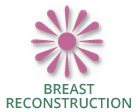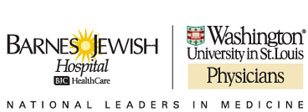Popular Posts
- What You Need to Know About a Mommy Makeover
- A Brief History of Lip Injections
- An effective nonsurgical alternative to liposuction
- Breast Augmentation
- What Sets Laser Lipo Apart?
AN EFFECTIVE NONSURGICAL ALTERNATIVE TO LIPOSUCTION
CoolSculpting is the name of a device put out by a company called Zeltiq. CoolSculpting involves a new approach to removing stubborn fat called “cryolipolysis”. A localized bulge of fat – such as the flank or bra strap roll – is placed in an applicator for 1 hour. The machine cools the fat cells which are more sensitive to the cold than the surrounding skin, nerves, or blood vessels. Some of the fat cells are altered, stimulating the release of natural signaling chemicals in the body called cytokines. These cytokines trigger the natural self-destruction of your own fat cells by a process known as apoptosis. Your body then clears these destroyed fat cells using the same mechanisms it uses to clear dietary fats.Studies show that clearance of these fat cell remnants does not elevate your natural blood fat levels.
Results from CoolSculpting, which is FDA-approved, are noticeable within 2 months of treatment and further improvement occurs over 6 months. Provided that you maintain your current weight, diet, and exercise routine, results are long-term since the affected fat cells are eliminated. CoolSculpting can be repeated for more dramatic results.
CoolSculpting can cause tingling, sensitivity, redness, and numbness to the treated area but none of these require time off or anesthesia. All of these symptoms resolve within days or weeks. You can exercise or go back to work immediately after CoolSculpting. CoolSculpting will remove 15-30% of the fat cells within the treatment area and provides an effective alternative for people who do not want to undergo a surgical procedure, such as liposuction, to remove an area of stubborn fat.
If you have questions or would like to book a consultation with one of the surgeons at West County Plastic Surgery, please call (314) 996-8800.







1 Comment
Dear Allison, Thanks for your question. We recommend that women who have no family history of breast cancer get a mammogram before surgery if they are 35 years old or older and have never had a clear mammogram before. We then recommend a mammogram about 6 months after surgery and then annually starting when you are 40. These recommendations may change but this is our current protocol. When you have a mammogram with implants, the mammographer should displace or shift your implants and reshoot their pictures. This way you will have 4 instead of 2 pictures. There are reports that during mammography patients have ruptured their implants, but this is very uncommon. Done properly, mammography is safe and remains a sensitive study for identifying suspicious breast masses in women with breast implants, particularly if the implants are located under the muscle. Terry Myckatyn, MD, FACS